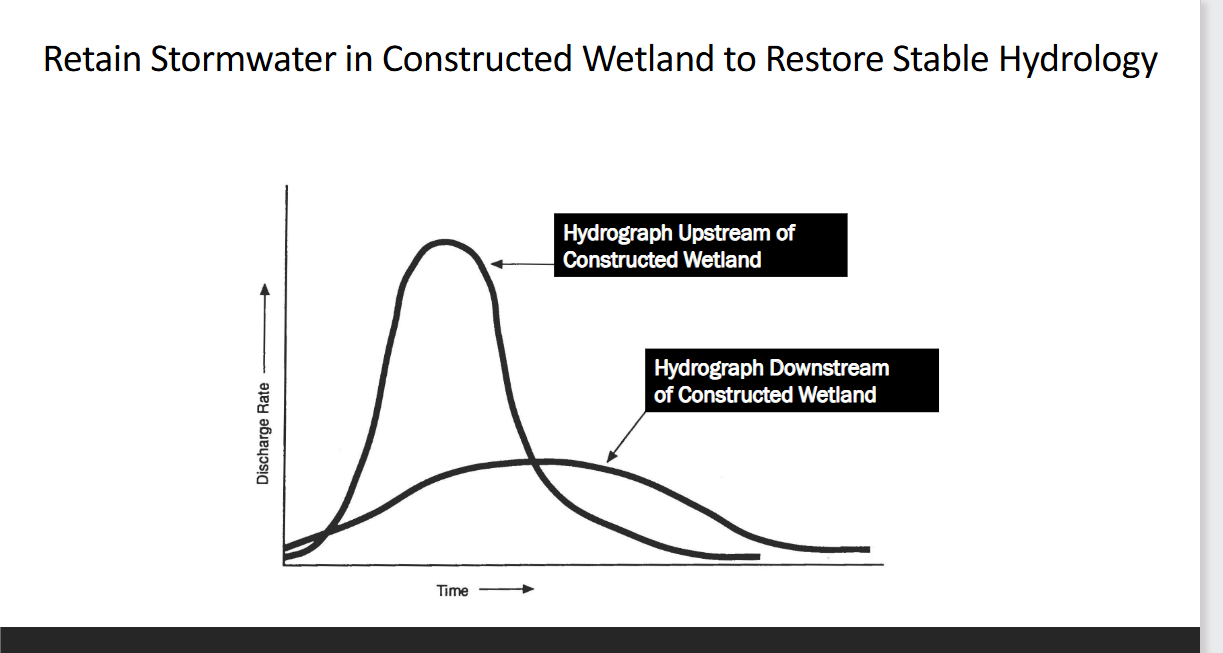Lecture 16 – Wetland Pollution Control
1/15
Earn XP
Description and Tags
A set of vocabulary flashcards to help understand key concepts related to Wetland Pollution Control.
Name | Mastery | Learn | Test | Matching | Spaced |
|---|
No study sessions yet.
16 Terms
Wetlands
Natural areas that filter pollutants, acting as 'the kidneys of the landscape.'
Pollution Sources
Common sources include urban runoff, farm runoff, industrial waste, septic systems, and construction.
Constructed Wetland
Man-made systems designed to treat wastewater or stormwater, mimicking natural wetland processes.
Clean Water Act
U.S. law regulating discharges into waters, including constructed wetlands; ensures water safety.
Hydrology
The study of water flow and levels, crucial for determining pollutant treatment time in wetlands.
Free Water Surface Wetlands
Wetlands where water flows over the soil surface with open water bodies.
Subsurface Flow Wetlands
Wetlands where water moves through gravel or soil below the surface, with no open water.
Biochemical Oxygen Demand (BOD)
A measure of the amount of organic material in water, which wetlands help reduce. Wetlands lower Biochemical Oxygen Demand (BOD) by trapping and breaking down organic matter. When water slows down, dirt and waste settle out (sedimentation and filtration). Tiny microbes living in the water and on plant roots then eat the leftover organic material, using it as food and releasing CO₂. Some of this organic matter also gets stuck in the soil, where it keeps breaking down slowly. In constructed wetlands, this process can remove up to 45 kilograms of BOD per acre per day, which helps clean the water and reduce pollution.
Nitrification
volatillization of NH3. The process where bacteria convert ammonium (NH₄⁺) to nitrate (NO₃⁻) in wetlands.
Denitrification
The process of converting nitrate (NO₃⁻) into nitrogen gas (N₂) by bacteria in wetlands.
Phosphorus Removal
Wetlands remove phosphorus and metals by slowing water so dirt and nutrients settle to the bottom. Phosphorus sticks to soil and metals like iron, aluminum, and calcium, or is taken up by plants and bacteria, while metals also settle, stick to sediments, or get absorbed by plants — keeping the water clean.
Stormwater Treatment
The retention and slow release of stormwater in constructed wetlands to reduce flooding and pollution.

Hydrograph
A graph that illustrates water flow patterns upstream and downstream of a wetland.
Heavy Particles
Sediments that settle in wetlands, aiding in the removal of pollutants from water.
Retention Time
The duration water stays in a wetland, important for effective pollution treatment.
Metal Removal
The trapping of metals in wetlands through sedimentation and plant uptake.